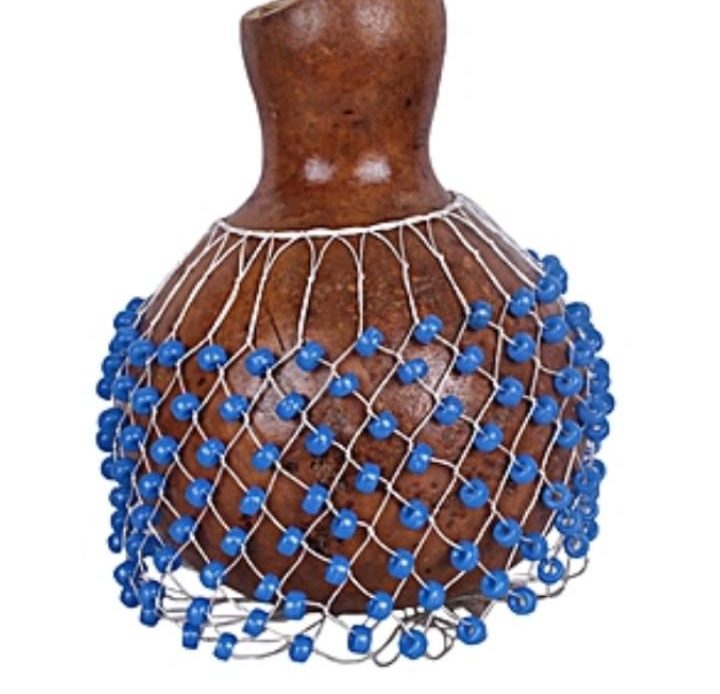Ṣẹ̀kẹ̀rẹ̀

Ṣẹ̀kẹ̀rẹ̀ is a handmade musical instrument commonly used in West Africa. It consists of a hollow dried gourd or calabash, covered on the outside with a net of seeds, beads, or shells. Although indigenous to West Africa, Ṣẹ̀kẹ̀rẹ̀ is also used in Latin American and Caribbean folklore and music.
The Shekere is made from vine gourds that grow on the ground. The shape of the gourd mostly determines the sound of the instrument. A Shekere is made by drying the gourd for several months then removing the pulp and seeds. After it is scrubbed, skilful beadwork and colours are then added. During musical performances, Ṣẹ̀kẹ̀rẹ̀ is shaken or hit with the palms.
The calabash or gourd used for Ṣẹ̀kẹ̀rẹ̀ historically served various purposes in Nigeria and other parts of the world. It has been used as a container for storing water and still serves as an essential utensil in some rural areas in Nigeria and abroad. Sometimes, they are used as birdhouses or as resonators for musical instruments.
Read Also: Indigenous Musical Instruments Across Major Tribes in Nigeria
For the Yoruba tribe in Nigeria, Shekere is connected with religion. It is accorded great respect and plays a vital role in certain traditional musical forms. The large beaded Shekere is called “agbe” and is traditionally owned and played, only by professional musicians such as (Olatunji, Music in African Life). It is a personal instrument that is never shared, even with family members. However, a son who is a professional musician may inherit his father’s agbe.
Throughout West Africa you will also find a smaller gourd, covered with a woven net that is tied off at the bottom, leaving a tail of loose strings. In Ghana and Togo among the Ewe language group, it is known as the “axatse” and is often used to accompany a drum or bell orchestra on important occasions. In Sierra Leone, a similar type of Shekere is found with a very loose net and long tail often called a “shake-shake” or “shaburay”.
In the past, when Africans were relocated to the “New World,” they carried along many of these rich musical instruments which later became rooted in parts of America and the Caribbean. In Cuba, Yoruba religious traditions that uphold the use of drums and Shekeres are found almost completely intact – with similar rhythmic patterns, names of instruments and accompanying chants. Brazilians sometimes use a beaded (with seeds) coconut called “afuxe” similar in name and style to the Ghanian “axatse”. In the US, the Shekere and other African related instruments have continued to grow in popularity and are rapidly becoming part of our contemporary musical expression.
Have you ever used a Shekere? Tell us when and where.
